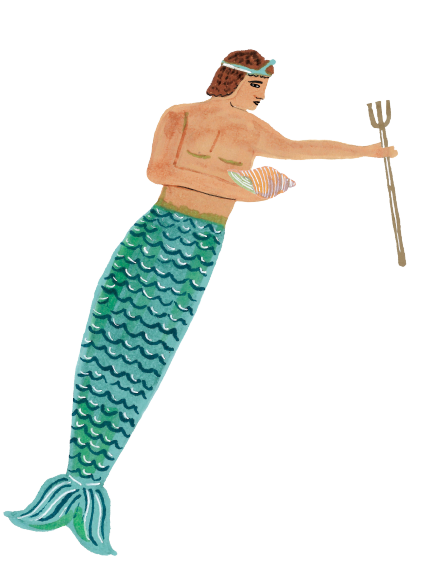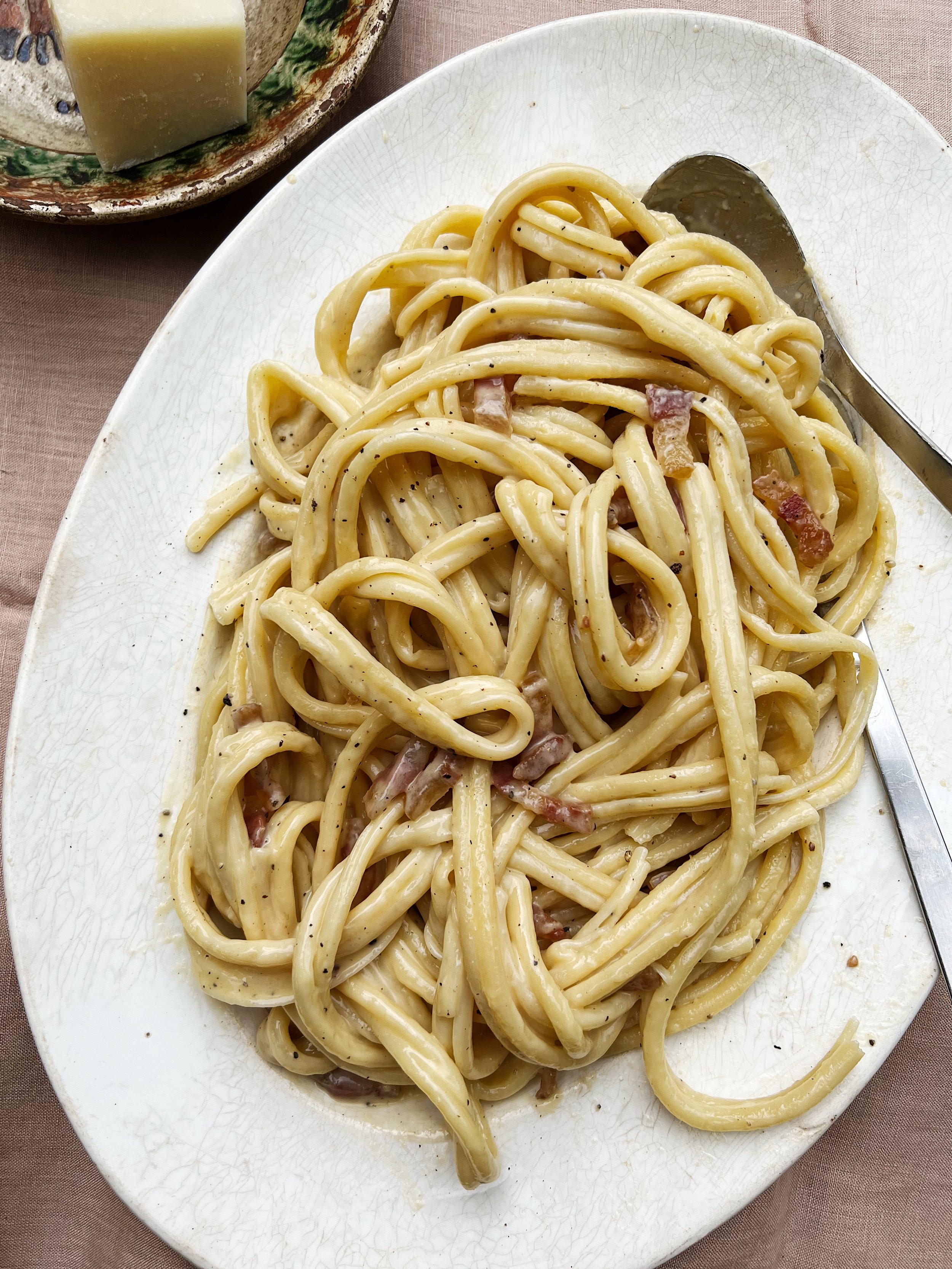Pasta alla carbonara
When I worked in Italy, I loved going to Rome on my day off. It was just an hour by train from my home in Southern Tuscany so an easy and very lovely day trip.
Some days I would just wander around, taking it all in. The one thing I definitely always managed was a plate of pasta for lunch. I love Roman pasta dishes - all’amatriciana (pecorino, guanciale, peperoncino and tomato), cacio e pepe (pecorino and pepper), alla gricia (pecorino, guanciale and pepper), and alla carbonara (pecorino, pepper, guanciale and egg). They’re all simple, so rely on very good quality ingredients, and from my experience, always dried pasta. No need for fresh here. I’ve actually used a dried maccheroni al ferreto, but traditionally it would be tonnarelli, spaghetti or rigatoni. Here is my recipe for how I make pasta alla carbonara.
Serves 4
Ingredients
100 g pecorino romano, finely grated, plus extra to serve
1 whole egg + 4 egg yolks, lightly beaten
1 tsp black peppercorns, toasted and crushed
180 g guanciale, cut into lardons
350 g pasta of your choice such as spaghetti, tonnarelli, rigatoni
Method
1.
Combine the grated pecorino, eggs and pepper in a bowl and mix to combine. It will be a fairly stiff mixture.
Place the guanciale in a large frying pan then set over a low-medium heat. Cook the guanciale until beginning to crisp and the fat has rendered. If you need to, add a tablespoon of extra virgin olive oil to help the guanciale cook nicely. Ensure it doesn’t become too crispy, otherwise it will become really dry and salty. Remove the guanciale with a slotted spoon, leaving the fat in the pan. Turn off the heat.
2.
Cook the pasta in a large pot of salted boiling water.
A few minutes before the pasta is al dente, turn the pan with the guanciale fat still in it back on over a medium-high heat.
3.
Just before the pasta is al dente, using a sieve, or tongs, remove the pasta and place it straight into the pan, along with a good few ladle-fulls of the cooking water. Vigorously shake the pan to emulsify the fat and water together and reduce the liquid a little just for a minute or two. The pasta should be perfectly cooked now.
Take the pan off the heat and pour in the egg and cheese mixture along with the cooked guanciale. Again, shake the pan and stir vigorously to melt the cheese and coat the pasta in what should now be a silky sauce. The residual heat from the pan will cook the eggs ever so slightly. If the sauce is too thick, add a little more pasta water. Serve immediately with extra pecorino, if desired.


